Historic Places
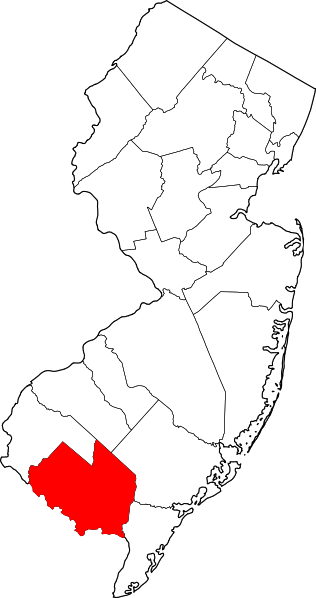
Cumberland County was founded in January 1748 and occupies about 500 square miles of land in the south central part of New Jersey and has over 40 miles of Delaware Bay coastline. Cumberland County is named for Prince William, Duke of Cumberland.
Cumberland County Historical Society
856-455-4055
Bethel African Methodist Episcopal Church
Sheppards Mill Road
Greenwich, NJ 08323
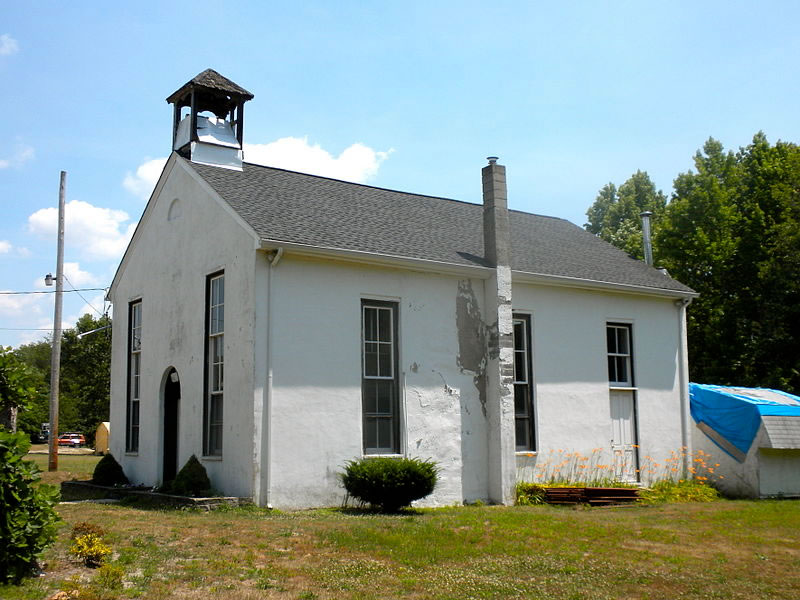
(Courtesy of the Cumberland County New Jersey website)
This property was conveyed by Evan Miller for $5 to the
trustees of African Methodist Episcopal church headed by
Nathaniel Murray June 7th, 1838 calling for 62 perches of
land "on the Sheppard Mill road to be used as a place of
worship for members of etc. - and to be (under the care of)
the African Methodist Episcopal Church at their general
conference in the U.S.A. Believed to be the oldest house
of worship for members of the black race in Cumberland County.
Bridgeton Historic District
Downtown Bridgeton, NJ
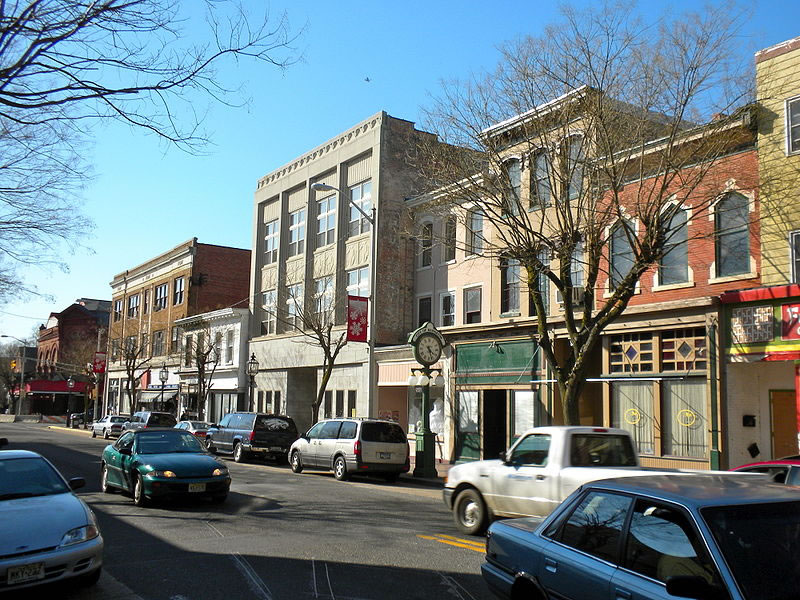
(Courtesy of Wikipedia.org)
Over 2,000 historic structures spanning over 250 years
Jeramiah Buck House
Bridgeton, NJ 08302
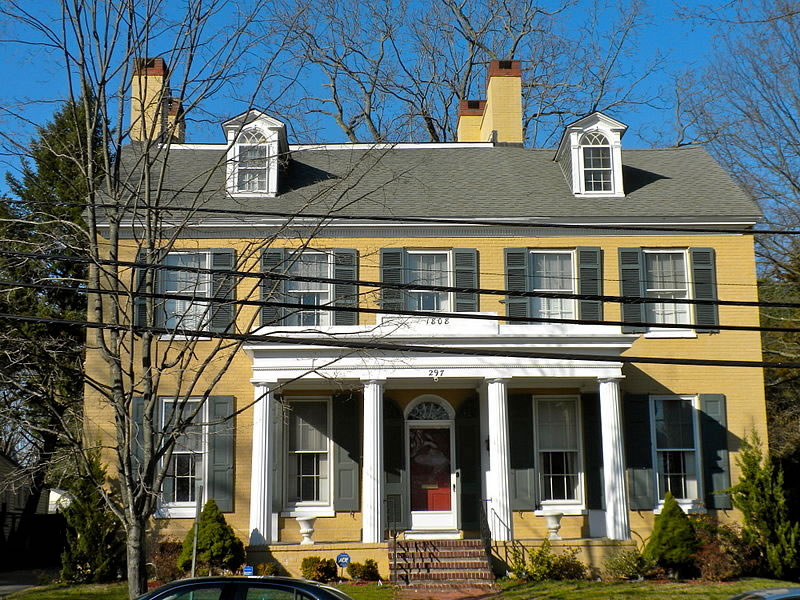
(Courtesy of Wikipedia.org)
The Buck House enjoys significance in several areas, all of
which have contributed to the historical importance of the house.
Industry: Jeremiah Buck, the builder, purchased the East
Lake grist mill in 1807 when he bought the land for his house.
In 1809, Buck constructed a dam to enlarge the pond,
modernized the grist mill, and built a saw mill. Two years later,
he enlarged his industrial operation by erecting a cotton and
woolen factory. Until the depression after the War of 1812
when financial problems forced Buck to assign his assets to
his creditors, Buck's industrial and manufacturing complex
played a crucial port in Bridgeton's early economic development.
Medicine: Dr. William Elmer, who purchased the house from
Buck in 1820, was Bridgeton's foremost physician. One of the
earliest graduates of the Medical School of the University of
Pennsylvania, Elmer quickly established himself as Bridgeton's
most popular doctor as measured by the size of his practice and
his popularity. After he inherited a considerable sum from
his father, he gradually began to phase out his practice and
by the end of the 1820's he was virtually retired.
Politics/government: Jonathan Elmer, son of Dr. William
Elmer and grandson of the famous revolutionary politician Jonathan
Elmer, resided in the Buck house all his life and devoted his entire
adult life to local politics. He served on the Cumberland County
Board of Freeholders for nearly fifty years, twenty-one of which he
was Director. He also served several terms on City Council.
The length of his political service in unprecedented in Bridgeton
political history.
Deerfield Presbyterian Church
Old Deerfield Pike (State 606)
Deerfield Township, NJ
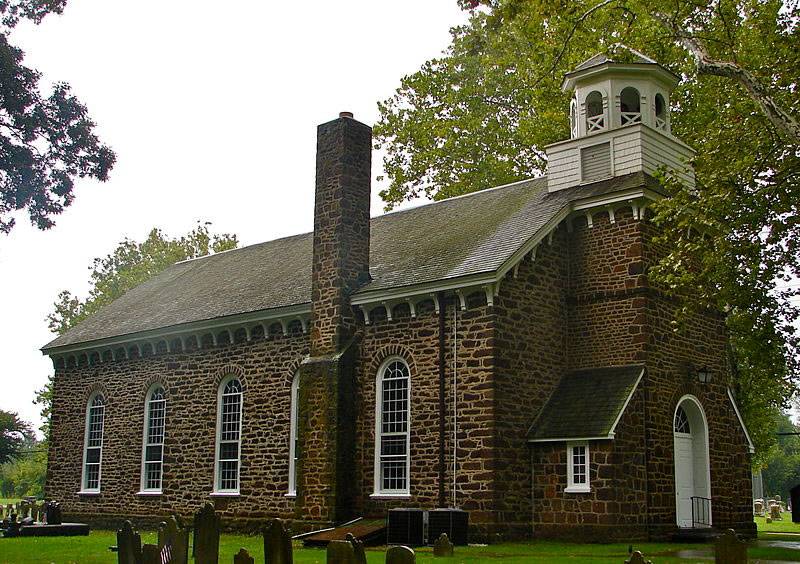
(Courtesy of Wikipedia.org)
Log Presbyterian 'meeting house' for public worship built
about 1737. The Stone Church was built in 1771 to house a
congregation active since 1732. Was considered the
Presbyterian "parish" for northern Cumberland County.
Enoch Green was pastor of the congregation from 1767-1776.
During his tenure, the present church was erected and he
established a school wherein he taught Philip Vickers Fithian
and Joseph Bloomfield, who became the first lawyer in
Bridgeton, an office in the Continental Army and Governor
of New Jersey.
DuBois Maritime Museum
949 Ye Greate Street
Greenwich, NJ 08323
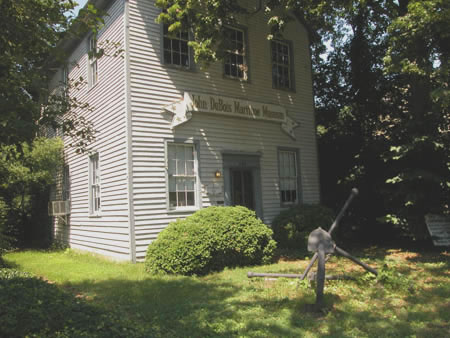
(Courtesy of Cumberland County website)
The John Dubois Maritime Museum houses a large collection
of Southern New Jersey Maritime related items from the
19th and early 20th centuries. A large and unique collection
of builders' models of local craft show the plans used to build
a new ship from the model itself. Exhibited are tools used to
carve ribs, planking, masts and booms. Also displayed are
many blocks, "deadlines" and "rigging." The museum is proud
to have on of the largest collections on the East Coast
of caulking tools.
East Point Lighthouse
Maurice River Township, NJ
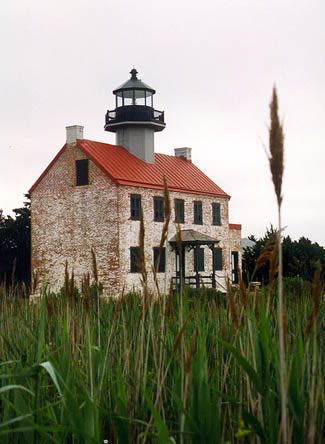
(Photo courtesy of lighthousefriends.com)
The East Point Lighthouse has played an important part
in the maritime history of the Maurice River area of
Cumberland County, New Jersey. Originally known
as the Maurice River Lighthouse, it was erected in
1849 by the United States Lighthouse Establishment.
The present name was initiated in 1913.
Throughout the years its guiding light has shown
fisherman, oystermen, and recreational boaters
the way into the mouth of the Maurice River.
During the daylight hours, it has been used as
a landmark by hunters, trappers, and surveyors.
Although numerous lighthouses once stood along
the edge of the Delaware Bay, East Point is the
last one remaining on the Jersey side.
Samual Ewing House
Main Street
Greenwich, NJ 08323
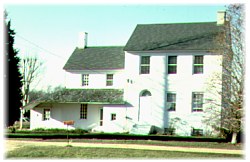
Built 1760 - 1770
(Courtesy of Cumberland County website)
Gibbon House
960 Ye Greate Street
Greenwich, NJ 08323
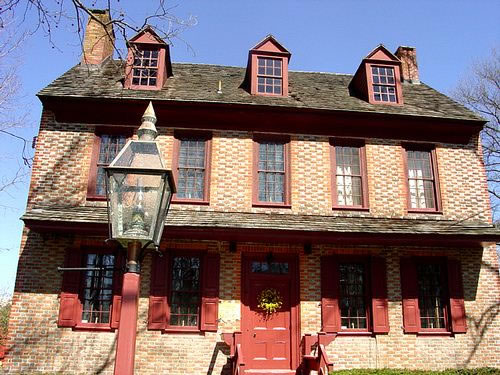
(Courtesy of Wikipedia.org and Cumberland County website)
In 1730, Nicholas Gibbon, who had inherited more than
3,000 acres of land nearby, bought a 16 acre lot in
Greenwich on which he built a replica of a London townhouse
he had admired. The brick, fired on the property, was laid
in the Flemish Bond pattern brought from Kent, England.
Gen. James Giles House
143 Broad Street
Bridgeton, NJ 08302
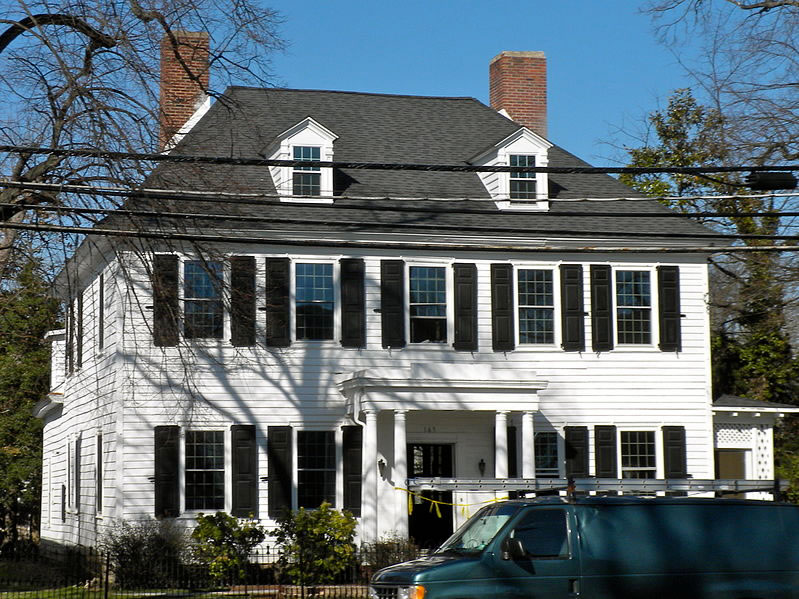
(Courtesy of Wikipedia.org and Cumberland County website)
One of the finest examples of Early Georgian Architecture.
James Giles, New York in 1759, a lieutenant in the New York
artillery early in the Revolution, remained in military service
until 1782 as a general. He studied law in Trenton, practiced
in New York; he moved with his family to Bridgeton in 1788.
He was the first Master of Brearley Lodge F and AM, and
first president of the Cumberland Bank. He died in the
house in 1826.
Greenwich Fire Company
Ye Greate
Greenwich, NJ 08323
856-455-6994
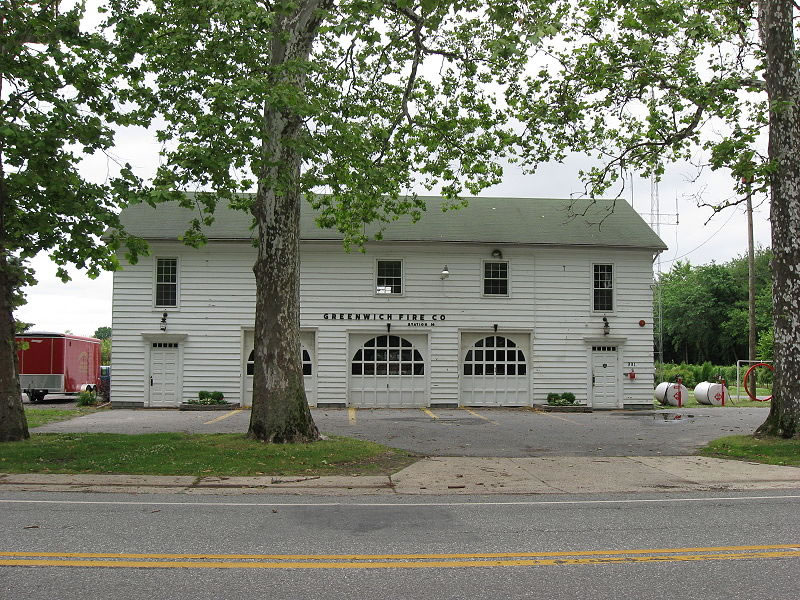
(Photo by Robert M Hunt, courtesy of Wikipedia.org)
Governor Howell Plantation
Roadstown-Shiloh Road
Shiloh, NJ
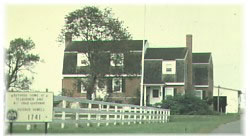
(Courtesy of Cumberland County website)
Before 1770 - Dormer window and porch added.
Original Owner - Lewis Howell. Richard Howell,
Governor of N.J. (1793-1801) lived here. William
Howell, father of Varina Howell who became Mrs.
Jefferson Davis, the First Lady of the Confederate
States, also lived in this house.
Hill Crest Tavern
59 West Broad Street
Bridgeton, NJ 08302
856-451-6085
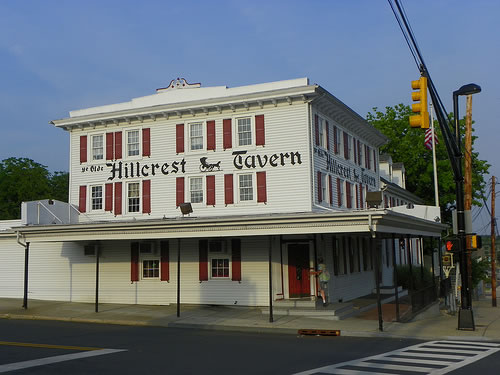
(Courtesy of Wikipedia.org and Cumberland County website)
The oldest section (at the east end) was erected in 1782
by Henry Hann. It served patrons who attended court sessions
and those who passed by Kings Highway (Broad St), the road
from Trenton to Cape May, a stagecoach route. The western
portion of the building is mid-19th century.
Beth Hillel Synagogue
Irving Ave. (next to Columbia Hall)
R.D. #1
Millville, NJ 08332
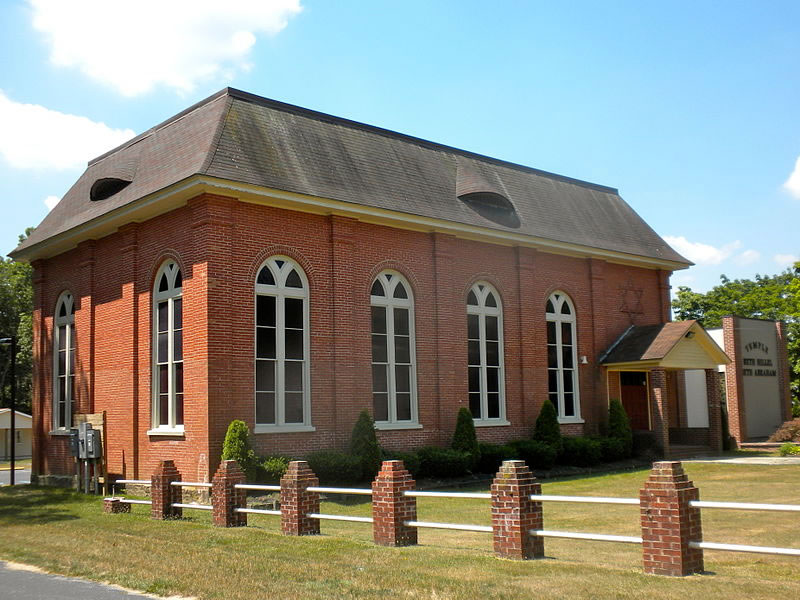
(Courtesy of Wikipedia.org and Cumberland County website)
Constructed during years between 1901 and 1907 following
the design of the architect, Louis Mounier of Chestnut Avenue,
Vineland, New Jersey, a French immigrant to the United States.
The only modifications in the interior was the replacement of
the original pews by modern seats purchased from Beth Abraham
synagogue in Bridgeton because of the lack of comfort of the pews.
Since it was built it has been in constant use by the orthodox
Jews of the area, including its use at the present time. It is also
significant in the history of the immigration of Russian Jews
to South Jersey under the aegis of Baron de Hirsch and the
Hebrew Jewish Agricultural and Industrial Aid Society.
Ceasar Hoskins Log Cabin
Jct. of South and Second Sts.
Mauricetown, NJ
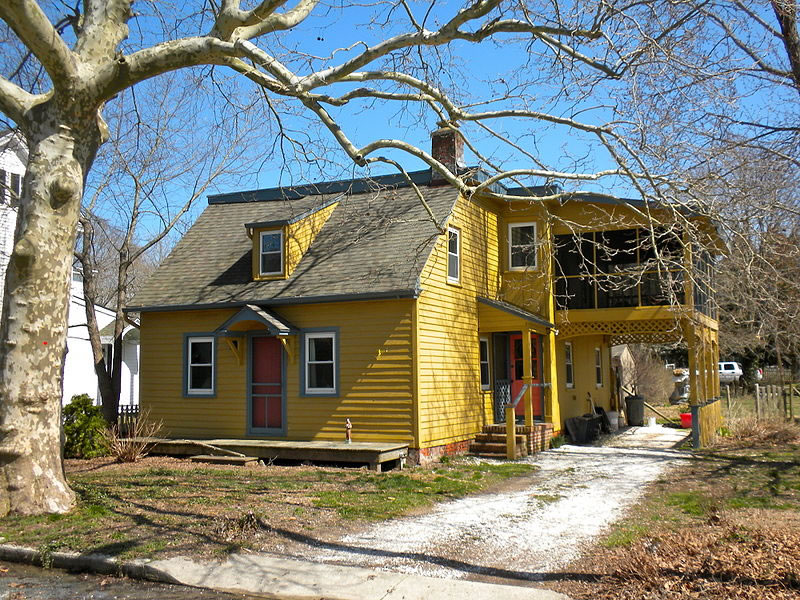
(Courtesy of Wikipedia.org and Cumberland County website)
The town of Mauricetown and the Mauricetown Historical Society
recognizes the Caesar Hoskins cabin as being the oldest
known structure in the area. Caesar Hoskins first came to
the area in 1691 as a whaleman. He was Sheriff of Cape
May County from 1701 to 1704 according to the "Early
History of Cape May County" by Maurice Beesley, M.D. 1857,
page 204. According to the John Scott Survey, he was a settler
in Mauricetown in 1714. No other settlers are known, at this time,
in this area as early as 1714. This then, is the earliest known
settler in Mauricetown pre-dating that of John Peterson's
settlement in the 1730's.
This cabin is unique in the fact that it is possibly one of the
very few log cabins left standing today that has not been
subject to the elements, the condition of the interior being
original. Because of its lath and plaster protective coating
since about 1815, it has not been necessary to restore or
replace a single log.
Landis Theater
830 East Landis Avenue
Vineland, NJ 08360
856-691-1121
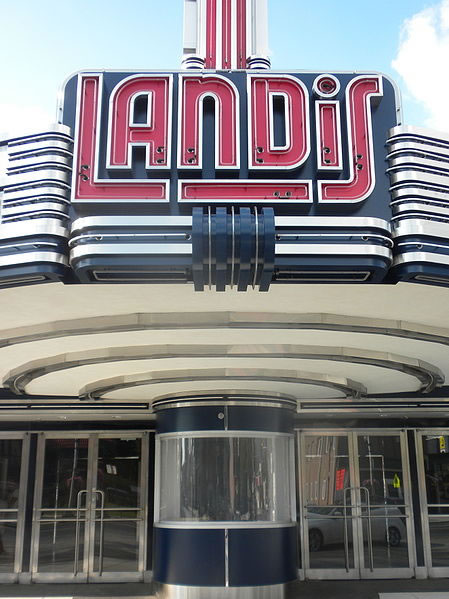
(Photo courtesy of Wikipedia.org)
Now closed, the Landis Theater, in Vineland, NJ, had its grand
opening in March of 1937. Originally, an Art Deco style
movie theater, the Landis Theater also showcased
many Vaudeville acts including Abbott and Costello.
Thomas Maskel House
2 miles west of Greenwich on Bacon's Neck Rd.
Bridgeton, NJ
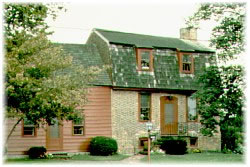
(Courtesy of the Cumberland County New Jersey website)
Thomas Maskel bought the land on which his house stands in 1703 from Edward Shaw.
Miah Maull Shoal Lighthouse
On the Delaware Bay
Downe Township, NJ
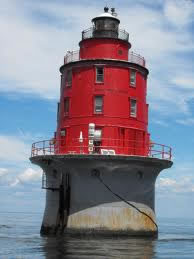
This light, the last offshore lighthouse to be erected
in Delaware Bay, marks one of a series of shoals
along the eastern side of the shipping channel,
between the Elbow of Cross Ledge Light and the
Brandywine Shoal Light. The name of the shoal
commemorates Nehemiah Maull, a river pilot who
was drowned in 1780 when the ship in which
he intended to sail to England was wrecked
on the then-unnamed shoal.
Millville's First Bank Building
2nd and E. Main Sts.
Millville, NJ
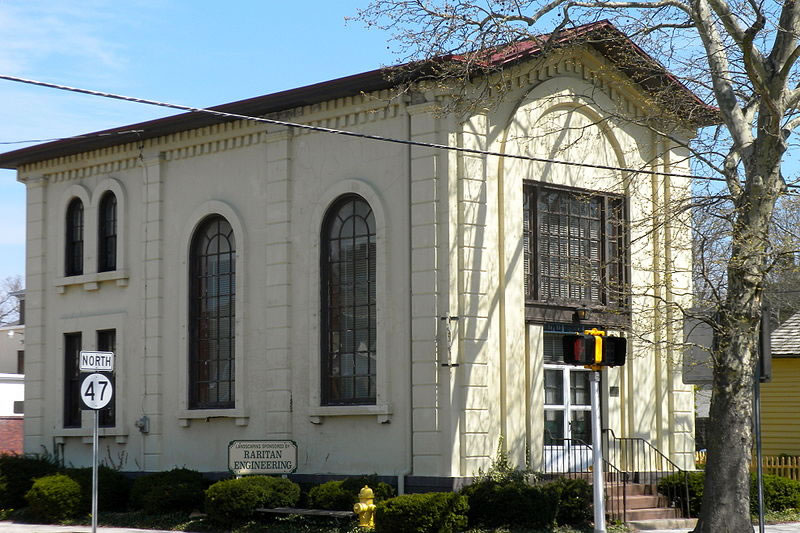
(Photo courtesy of Wikipedia.org)
Known simply as the Millville Bank, Millville's first banking
institution was chartered by the New Jersey legislature by
an act approved March 19, 1857. The directors, at their first
meeting, authorized the purchase of the site at Second and
Main Streets. A contract was promptly made for the
construction of the banking house which was modeled after
the bank at Burlington. The Millville Bank opened for
business on October 14, 1857. It is now used by the
Millville Historical Society.
Old Broad Street Presbyterian Church and Cemetery
Broad Street and Lawrence Street
Bridgeton, NJ
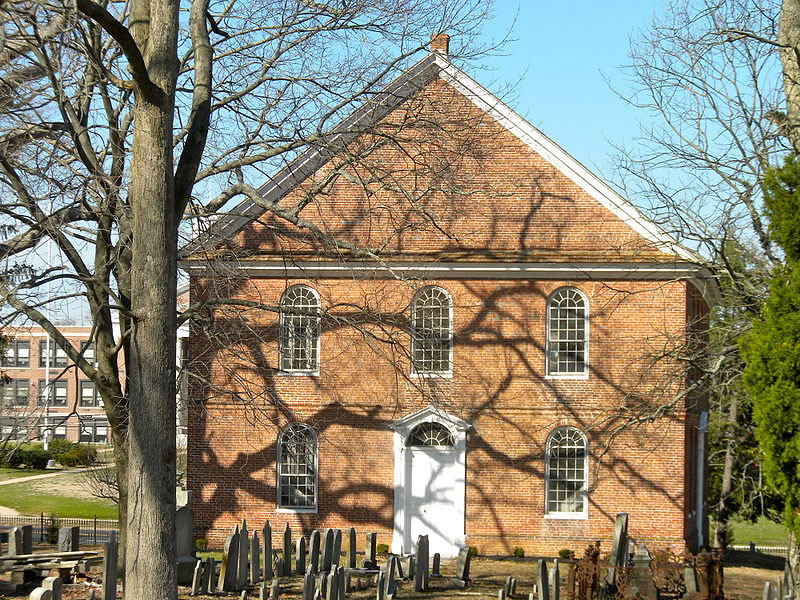
(Photo courtesy of Wikipedia.org)
July 26, 1792 Foundation Stone was laid. Dedicated in
May 1795. 1792 - Church (Georgian). During the 1770's
plans were made for building the church, but the outbreak
of the Revolution delayed the project. In 1791 Mark Miller,
a member of the Society of Friends (Quakers) donated the
lot on which the church stands. Some of the funds were raised
by means of a lottery. The original cost of the church
was $4,280. The Presbyterian meeting house is one of the
best preserved 18th century buildings in New Jersey.
Its near perfect condition has made it nationally famous.
Old Stone Church
Route 553
Cedarville, NJ
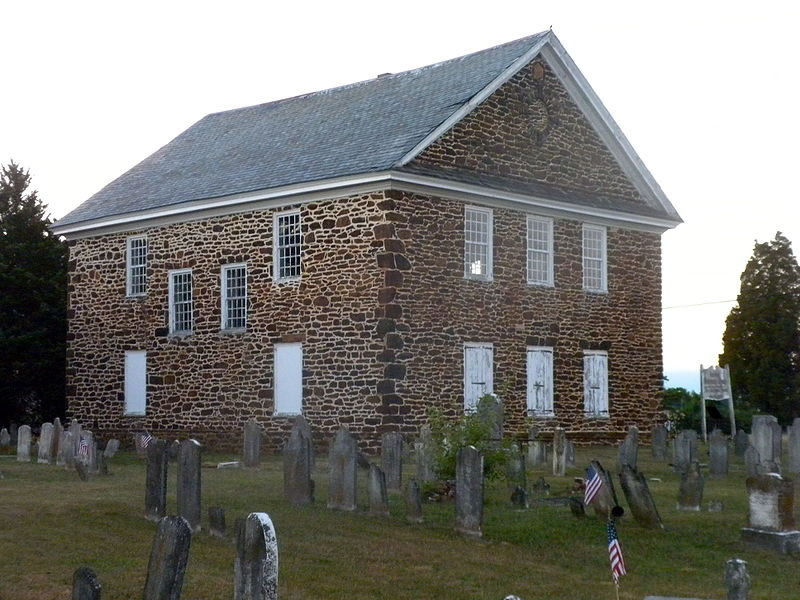
(Photo courtesy of Wikipedia.org)
In May of 1697, a group of potential settlers from Fairfield,
Connecticut purchased a tract of land in Cohansey.
On June 10, 1697, these settlers formed the First Presbyterian
Church of South Jersey. Today a granite monument
(dedicated 1909) stands on the site of their first log meeting
house. The cemetery which adjoined the meeting house
remains the oldest in the township. Around 1717, a frame
meeting house with shingle siding replaced the log one.
By 1775, the building was declared unsafe so the congregation
purchased the ground where the Old Stone Church still stands.
Although, the building was not yet complete, the first sermon
was heard on September 7, 1788 when Reverend Ethan
Osborn assumed the pastorship. He remained until 1844.
In 1850, He returned to the Old Stone Church to give the last
sermon before the congregation moved to their new church in Fairton.
Potter's Tavern
West Broad Street
Bridgeton, NJ 08302
856-455-5529
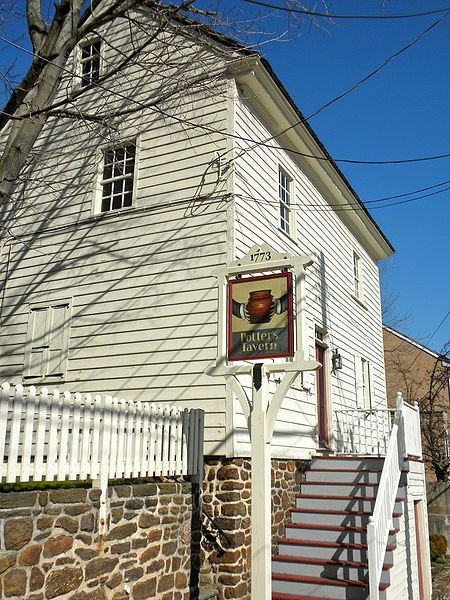
(Photo courtesy of Wikipedia.org)
This historic landmark is the home of New Jersey's
first newspaper, The Plain Dealer. The once popular
retreat of citizens who called for independence
from England has been carefully restored to its
1776 appearance.
Samuel W. Seeley House
274 E. Commerce St.
Bridgeton, NJ
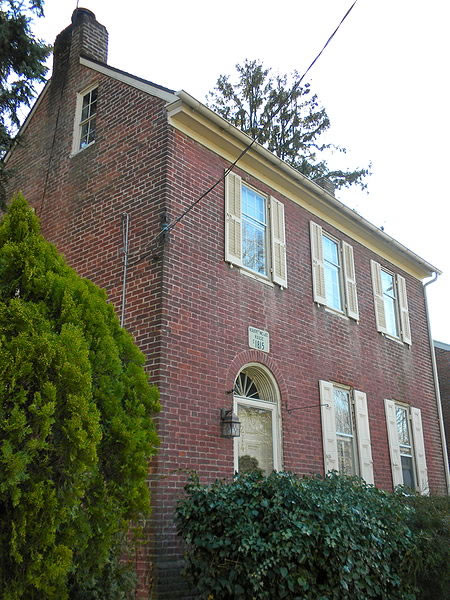
Built in 1799 (Photo courtesy of Wikipedia.org)
Swedish Granary
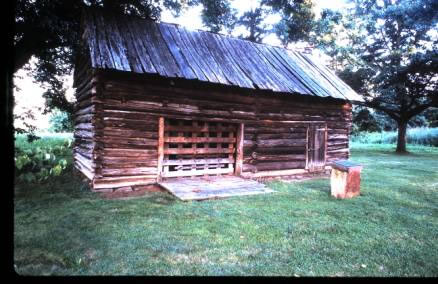
(Photo courtesy of the Cumberland County Historical Society)
When the granary was built in 1650, this part of South Jersey was
known as New Sweden. The out building survives as an example
of an early architectural effort in Cumberland County. It is said to
be the oldest agricultural building in the United States.
Trinity African Methodist Episcopal Church
1995 at Bridgeton-Milltown Road
Fairfield Township, NJ
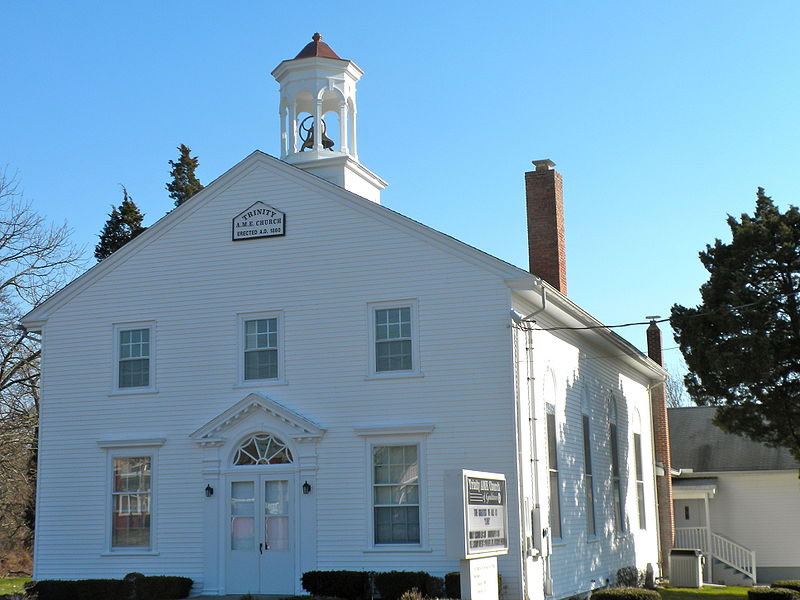
(Photo courtesy of Wikipedia.org)
It is one of the oldest settlements in America founded by free,
land-owning African-Americans. The Rev. Ruben Cuff of
Salem County organized a society of African Americans in
1818. In 1823 they bought an unused schoolhouse to use as
a church, and in 1834 they bought a second schoolhouse
and moved it to the site. The current church was built in 1860,
on the eve of the Civil War
Copyright © 2011 - 2024 · All Rights Reserved
NJ Town Guide Online is part of the Giant Impact Group LLC